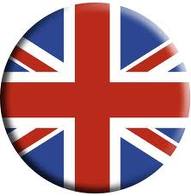WEB PAGES TO REVIEW :
ABOUT THE PRESENT SIMPLE
http://www.curso-ingles.com/ejercicios-test-ingles/presente-tense.php
http://www.paulmcg.com/esol/worksheets/E1/amc_mats/E1_pres_simple.htm
PAINTINGS
THINK ABOU IT
“Only two things are infinite, the universe and human stupidity, and I’m not sure about the former.”Albert Einstein
martes, 20 de marzo de 2012
lunes, 19 de marzo de 2012
SAINT PATRICK'S DAY
The person who was to become St. Patrick, the patron saint of Ireland, was born in Wales about AD 385. His given name was Maewyn, and he almost didn't get the job of bishop of Ireland because he lacked the required scholarship.
The Pagan Saint?
Far from being a saint, until he was 16, he considered himself a pagan. At that age, he was sold into slavery by a group of Irish marauders that raided his village. During his captivity he became a Christian and adopted the name Patrick.
He escaped from slavery after six years and went to Gaul where he studied in the monastery under St. Germain, bishop of Auxerre for a period of twelve years. During his training he got the notion that his calling was to convert the pagans to Christianity.
His wishes were to return to Ireland, to convert the native pagans to Christianity. But his superiors instead appointed St. Palladius. But two years later, Palladius transferred to Scotland. Patrick was then appointed as second bishop to Ireland.
Spreading the "Truth"
Patrick was quite successful at winning converts. And this fact rightfully upset the Celtic Druids, who had their own native religion. Patrick was arrested several times, but escaped each time. He traveled throughout Ireland, establishing monasteries across the country. He also set up schools and churches which would aid him in his indoctrination of the Irish country into Christianity.His mission in Ireland lasted for thirty years. After that time, Patrick retired to County Down. He died on March 17 in AD 461. That day has been commemorated as St. Patrick's Day ever since.
What Are the Traditions of St. Patrick's Day?
There are many traditions and symbols associated with St. Patrick's Day and Ireland. Here are a handful of the most popular practices.
Shamrock
The shamrock as symbol of Ireland and St. Patrick's Day is partly due to the natural abundance of clover plants in the country, but largely due to its strong association with Christianity. According to Robert Mahony, Professor of English and member of the Center for Irish Studies at Catholic University, legend has it that St. Patrick used the shamrock to visually illustrate the concept of the Trinity (the Father, the Son, and the Holy Spirit) when trying to convert polytheistic pagans to Christianity.
"A clover is one plant with three leaves, but the three leaves are necessary to make it [complete]," explains Prof. Mahony. "[In Christianity,] God is three persons, but it's not the same as three gods." The simple analogy is thought to have helped non-Christians understand a fundamental element of the Christian religion, facilitating conversion.
It was through the retelling of this story that the shamrock became associated with St. Patrick and Ireland's conversion to Christianity. As a result, the shamrock is a widely used to commemorate Saint Patrick's Day, and in modern times has been appropriated by secular institutions as a symbol for the Irish.
Four-Leaf Clover
Although clovers are most often found in nature with three leaves, rare four-leaf clovers do exist. Finding one is thought to bring someone extreme luck. The folklore for four-leaf clovers differs from that of the Shamrock due to the fact that it has no religious allusions associated with it. It is believed that each leaf of a four-leaf clover represents something different: first is hope, the second is faith, the third is love, and the fourth is happiness.
Leprechauns
Just what does a mythical leprechaun look like and why are they so special? A leprechaun looks like a little old man and dresses like a shoemaker with a cocked hat and leather apron. A Leprechaun's personality is described as aloof and unfriendly. They live alone and pass the time by mending the shoes of Irish fairies.
According to St. Patrick's Day: Parades, Shamrocks, and Leprechauns by Elaine Landau, the legend is that the fairies pay the leprechauns for their work with golden coins, which the "little people" collect in large pots--the famous "pots of gold" often associated with leprechauns.
If you listen closely for the sound of their hammer you might be able to capture one. If you do you can force him (with the threat of bodily violence) to reveal where he's hidden his treasure. Be careful! Do not take your eyes off him for if you do he will surely vanish and your hopes of finding his treasure will vanish with him.
Green
So why do we all wear green?
Probably because you'll be pinched if you don't! School children started this tradition. Green is also the color of spring, the shamrock, and is connected with hope and nature. Historically, green has been a color used in the flags of several revolutionary groups in Ireland and as a result it appears in the official tri-color country flag, adopted in 1919.
In addition to that, Ireland is often called the "Emerald Isle" due to the lush natural greenery found on the island. Says Prof. Mahony, "One of the things that strikes people all the time is how Ireland is incredibly green--it's very far north, but it doesn't get frozen. When people say that 'Ireland has 40 shades of green,' they are right!"
The luck of the Irish
Want to be lucky this St. Patrick's Day? Follow this advice:
1. Find a four-leaf clover. 2. Wear green (so you don't get pinched). 3. Kiss the blarney stone. 4. Catch a Leprechaun if you can.
In honor of the festivities we leave you with this Irish blessing: May your blessings outnumber the shamrocks that grow and may trouble avoid you wherever you go!
There are many traditions and symbols associated with St. Patrick's Day and Ireland. Here are a handful of the most popular practices.
Shamrock
The shamrock as symbol of Ireland and St. Patrick's Day is partly due to the natural abundance of clover plants in the country, but largely due to its strong association with Christianity. According to Robert Mahony, Professor of English and member of the Center for Irish Studies at Catholic University, legend has it that St. Patrick used the shamrock to visually illustrate the concept of the Trinity (the Father, the Son, and the Holy Spirit) when trying to convert polytheistic pagans to Christianity.
"A clover is one plant with three leaves, but the three leaves are necessary to make it [complete]," explains Prof. Mahony. "[In Christianity,] God is three persons, but it's not the same as three gods." The simple analogy is thought to have helped non-Christians understand a fundamental element of the Christian religion, facilitating conversion.
It was through the retelling of this story that the shamrock became associated with St. Patrick and Ireland's conversion to Christianity. As a result, the shamrock is a widely used to commemorate Saint Patrick's Day, and in modern times has been appropriated by secular institutions as a symbol for the Irish.
Four-Leaf Clover
Although clovers are most often found in nature with three leaves, rare four-leaf clovers do exist. Finding one is thought to bring someone extreme luck. The folklore for four-leaf clovers differs from that of the Shamrock due to the fact that it has no religious allusions associated with it. It is believed that each leaf of a four-leaf clover represents something different: first is hope, the second is faith, the third is love, and the fourth is happiness.
Leprechauns
Just what does a mythical leprechaun look like and why are they so special? A leprechaun looks like a little old man and dresses like a shoemaker with a cocked hat and leather apron. A Leprechaun's personality is described as aloof and unfriendly. They live alone and pass the time by mending the shoes of Irish fairies.
According to St. Patrick's Day: Parades, Shamrocks, and Leprechauns by Elaine Landau, the legend is that the fairies pay the leprechauns for their work with golden coins, which the "little people" collect in large pots--the famous "pots of gold" often associated with leprechauns.
If you listen closely for the sound of their hammer you might be able to capture one. If you do you can force him (with the threat of bodily violence) to reveal where he's hidden his treasure. Be careful! Do not take your eyes off him for if you do he will surely vanish and your hopes of finding his treasure will vanish with him.
Green
So why do we all wear green?
Probably because you'll be pinched if you don't! School children started this tradition. Green is also the color of spring, the shamrock, and is connected with hope and nature. Historically, green has been a color used in the flags of several revolutionary groups in Ireland and as a result it appears in the official tri-color country flag, adopted in 1919.
In addition to that, Ireland is often called the "Emerald Isle" due to the lush natural greenery found on the island. Says Prof. Mahony, "One of the things that strikes people all the time is how Ireland is incredibly green--it's very far north, but it doesn't get frozen. When people say that 'Ireland has 40 shades of green,' they are right!"
The luck of the Irish
Want to be lucky this St. Patrick's Day? Follow this advice:
1. Find a four-leaf clover. 2. Wear green (so you don't get pinched). 3. Kiss the blarney stone. 4. Catch a Leprechaun if you can.
In honor of the festivities we leave you with this Irish blessing: May your blessings outnumber the shamrocks that grow and may trouble avoid you wherever you go!
lunes, 5 de marzo de 2012
ANIMALS
HERE YOU HAVE INTERESTING PAGES ABOUT ANIMALS
http://kids.nationalgeographic.com/kids/animals/
http://www.sheppardsoftware.com/content/animals/kidscorner/classification/kc_classification_appearance.htm
http://kids.nationalgeographic.com/kids/animals/
http://www.sheppardsoftware.com/content/animals/kidscorner/classification/kc_classification_appearance.htm
Suscribirse a:
Entradas (Atom)







